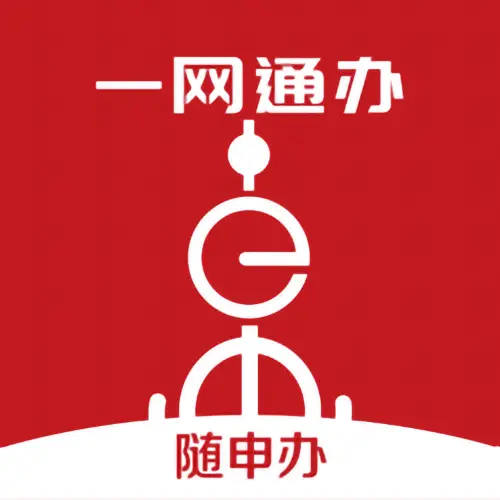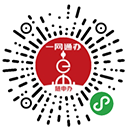1. 什么是注册商标?
经商标局核准注册的商标为注册商标。
2. 注册商标包含哪些类型?
注册商标包括商品商标、服务商标和集体商标、证明商标。
集体商标,是指以团体、协会或者其他组织名义注册,供该组织成员在商事活动中使用,以表明使用者在该组织中的成员资格的标志,如铁路、银行、邮政、电信的标志就属于集体商标。
证明商标,是指由对某种商品或者服务具有监督能力的组织所控制,而由该组织以外的单位或者个人使用于其商品或者服务,用以证明该商品或者服务的原产地、原料、制造方法、质量或者其他特定品质的标志,如国际羊毛局注册并负责管理的纯羊毛标志就是著名的证明商标。
3. 什么是驰名商标?
驰名商标是指经过长期使用,在市场上享有较高声誉并为相关公众熟知的商标。
4. 认定驰名商标需考虑的因素有哪些?
认定驰名商标应当考虑下列因素:(1)相关公众对该商标的知晓程度;(2)该商标使用的持续时间;(3)该商标的任何宣传工作的持续时间、程度和地理范围;(4)该商标作为驰名商标受保护的记录;(5)该商标驰名的其他因素。
生产、经营者不得将“驰名商标”字样用于商品、商品包装或者容器上,或者用于广告宣传、展览以及其他商业活动中。
5. 什么是地理标志?
地理标志是指标示某商品来源于某地区,该商品的特定质量、信誉或者其他特征,主要由该地区的自然因素或者人文因素所决定的标志。
6. 注册商标的有效期多长?商标有效期届满后如何续展?
注册商标的有效期为十年,自核准注册之日起计算。注册商标有效期满,需要继续使用的,商标注册人应当在期满前十二个月内按照规定办理续展手续;在此期间未能办理的,可以给予六个月的宽展期。每次续展注册的有效期为十年,自该商标上一届有效期满次日起计算。
7. 什么是商标的使用?
商标的使用,是指将商标用于商品、商品包装或者容器以及商品交易文书上,或者将商标用于广告宣传、展览以及其他商业活动中,用于识别商品来源的行为。
8. 注册商标专用权的保护范围是什么?
注册商标专用权的保护,以核准注册的商标和核定使用的商品为限。换言之,注册商标专用权意味着注册商标权利人对其注册商标在核定使用的商品或服务上进行专用使用的权利,其他人未经许可不得在相同或相类似商品或服务上,使用与注册商标相同或者相近似的商标标志。
9. 合理使用他人注册商标的情形有哪些?
合理使用他人注册商标的情形一般包括:
(1)注册商标中含有的本商品的通用名称、图形、型号,或者直接表示商品的质量、主要原料、功能、用途、重量、数量及其他特点,或者含有的地名,注册商标专用权人无权禁止他人正当使用。
三维标志注册商标中含有的商品自身的性质产生的形状、为获得技术效果而需有的商品形状或者使商品具有实质性价值的形状,注册商标专用权人无权禁止他人正当使用。
(2)商标注册人申请商标注册前,他人已经在同一种商品或者类似商品上先于商标注册人使用与注册商标相同或者近似并有一定影响的商标的,注册商标专用权人无权禁止该使用人在原使用范围内继续使用该商标,但可以要求其附加适当区别标识。
(3)商标权利用尽,即对于经商标权人许可或以其他方式合法投放市场的商品,他人在购买后无须经过权利人许可,就可以将带有该商标的商品再次售出或者以其他方式提供给公众。
10.什么是商标许可使用?商标许可使用有哪些类型?
商标许可使用是指商标所有人通过签订商标使用许可合同等方式,许可他人使用其商标。商标使用许可包括以下三类:
(1)独占使用许可,是指商标所有人在约定的期间、地域和以约定的方式,将该商标仅许可一个被许可人使用,商标所有人依约定不得使用该商标;
(2)排他使用许可,是指商标所有人在约定的期间、地域和以约定的方式,将该商标仅许可一个被许可人使用,商标所有人依约定可以使用该商标但不得另行许可他人使用该商标;
(3)普通使用许可,是指商标所有人在约定的期间、地域和以约定的方式,许可他人使用其商标,并可自行使用该商标和许可他人使用该商标。
11.侵犯注册商标专用权的行为主要有哪些?承担什么法律责任(民事责任、行政责任、刑事责任)
侵犯注册商标专用权的行为包括:
(1)未经商标注册人的许可,在同一种商品上使用与其注册商标相同的商标的;
(2)未经商标注册人的许可,在同一种商品上使用与其注册商标近似的商标,或者在类似商品上使用与其注册商标相同或者近似的商标,容易导致混淆的;
(3)销售侵犯注册商标专用权的商品的;
(4)伪造、擅自制造他人注册商标标识或者销售伪造、擅自制造的注册商标标识的;
(5)未经商标注册人同意,更换其注册商标并将该更换商标的商品又投入市场的;
(6)故意为侵犯他人商标专用权行为提供便利条件,帮助他人实施侵犯商标专用权行为的;
(7)给他人的注册商标专用权造成其他损害的。
侵犯商标权的法律责任分民事责任、行政责任和刑事责任,其中:
l 民事责任包括:
(1)停止侵权;
(2)赔偿责任:侵犯商标专用权的赔偿数额,按照权利人因被侵权所受到的实际损失确定;实际损失难以确定的,可以按照侵权人因侵权所获得的利益确定;权利人的损失或者侵权人获得的利益难以确定的,参照该商标许可使用费的倍数合理确定。对恶意侵犯商标专用权,情节严重的,可以在按照上述方法确定数额的一倍以上五倍以下确定赔偿数额。赔偿数额应当包括权利人为制止侵权行为所支付的合理开支;
(3)销毁属于假冒注册商标的商品,销毁主要用于制造假冒注册商标的商品的材料、工具,且不予补偿;
(4)禁止前述材料、工具进入商业渠道,且不予补偿,假冒注册商标的商品不得在仅去除假冒注册商标后进入商业渠道。
l 行政责任包括:
(1)责令立即停止侵权行为;
(2)没收、销毁侵权商品和主要用于制造侵权商品、伪造注册商标标识的工具;
(3)罚款;
l 刑事责任包括:
(1)【假冒注册商标罪】未经注册商标所有人许可,在同一种商品上使用与其注册商标相同的商标,情节严重的,处三年以下有期徒刑或者拘役,并处或者单处罚金;情节特别严重的,处三年以上七年以下有期徒刑,并处罚金;
(2)【销售假冒注册商标的商品罪】销售明知是假冒注册商标的商品,销售金额数额较大的,处三年以下有期徒刑或者拘役,并处或者单处罚金;销售金额数额巨大的,处三年以上七年以下有期徒刑,并处罚金;
(3)【非法制造、销售非法制造的注册商标标识罪】伪造、擅自制造他人注册商标标识或者销售伪造、擅自制造的注册商标标识,情节严重的,处三年以下有期徒刑、拘役或者管制,并处或者单处罚金;情节特别严重的,处三年以上七年以下有期徒刑,并处罚金。
12.能否将他人注册商标作为企业字号使用?
根据中国商标法第五十八条的规定,将他人注册商标、未注册的驰名商标作为企业名称中的字号使用,误导公众,构成不正当竞争行为的,依照《中华人民共和国反不正当竞争法》处理。所以,将他人注册商标作为企业字号使用,如果产生误导公众的结果,按照不正当竞争行为处理。
13.注册商标的注册标记是什么?如何使用注册标记?
根据中国商标法实施条例第六十三条的规定,注册商标的注册标记包括注和®。使用注册标记,应当标注在商标的右上角或者右下角。
1. What is a registered trademark?
A registered trademark is a trademark registered uponverification and approval of the Trademark Office.
2. What are the types of registered trademark?
Registered trademarks includecommodity trademarks, service marks, collective marks and certification marks.
Collective marks refer tosigns registered in the name of groups, associations or other organizations andintended to be used by the members of such organizations in commercialactivities to indicate their membership therein; for example, railway, bank,postal and telecommunication signs are collective marks.
Certification marks refer tosigns controlled by organizations having the capacity for supervision overcertain goods or services and used by entities or individuals other than suchorganizations for their goods or services to certify the country of origin, rawmaterials, manufacturing method, quality or other characteristics of such goodsor services; for example, the woolmark registered with and supervised by theInternational Wool Secretariat (IWS) is a famous certification mark.
3. What is a well-known trademark?
A well-known trademark is a trademark that enjoys highreputation in the market and is well-known by the relevant public afterlong-term use.
4. What are the factors that shall be considered in the recognition of awell-known trademark?
The following factors shall be considered in the recognition of awell-known trademark: (1) the degree of awareness of the trademark among the relevant public; (2)the duration of the use of the trademark; (3) the duration, extent andgeographical scope of all publicity operations carried out for the trademark; (4)the records of protection provided for the trademark as a well-known trademark;and (5) other factors relating to the well-known status of the trademark.
Manufacturers and businessoperators shall neither indicate the words “well-known trademark” on goods andthe packaging or containers of goods, nor use the same for advertising,exhibition and other commercial activities.
5. What is a geographical indication?
Geographicalindication refers to a mark indicating that a product originates from a regionand that the specific quality, reputation or other characteristics of theproduct are mainly determined by the natural or cultural factors of the region.
6. How long is a registered trademark valid? How is a trademark renewed uponexpiry of its validity period?
A registered trademark shall be valid for ten years,commencing from the date of registration approval. The registrant of aregistered trademark, if intends to continue using the trademark upon expiry ofthe validity period thereof, shall go through renewal procedures within twelvemonths prior to the date of such expiry in accordance with relevant provisions,failing which a grace period of six months may be granted. Each renewal ofregistration shall be valid for ten years, commencing from the date immediatelyfollowing the date of expiry of the previous validity period of the trademark.
7. What is the use of trademark?
Use of trademark refers to the use of trademark ongoods, the packaging or containers of goods and the transaction documents ofgoods, or the use of trademark for advertising, exhibition and other commercialactivities for the purpose of identifying the sources of goods.
8. What is the scope of protection of exclusive right to use a registeredtrademark?
The exclusive right to use aregistered trademark shall be limited to the trademark registered upon verification andapproval and the goods approved to be designated to becovered by the trademark. In other words, the exclusive right to use aregistered trademark means the right of the right holder of a registeredtrademark to use the trademark on the goods or services approved to bedesignated to be covered by the trademark, and that without authorization,others may not use any trademark signs identical or similar to the registeredtrademark on any goods or services identical or similar to such goods orservices.
9. What are the circumstances of the fair use of others’registered trademarks?
Generally, the circumstances of the fair use of others’registered trademarks include:
(1) The holder of theexclusive right to use a registered trademark shall have no right to prohibitothers from properly using such generic name, graphics or models of acommodity, or information directly indicating the quality, main raw materials,functions, purposes, weight, quantity or other features of the commodity, orthe names of geographical locations as contained in the registered trademark.
The holder of the exclusiveright to use a registered trademark that is a three-dimensional symbol shallhave no right to prohibit others from properly using such forms shaped by theinherent nature of a commodity, commodity forms necessary for achievingtechnological effects or forms that bring substantive value to a commodity ascontained in the registered trademark.
(2) Where, before theregistrant of a trademark applies for registration of the trademark, anotherperson has used ahead of such registrant a trademark with certain influence andidentical or similar to the registered trademark on the same or similar goods,the holder of the exclusive right to use the registered trademark shall have noright to prohibit the said person from continuing to use the trademark withinthe original scope of use, but may require the latter to add suitablerepresentations for distinguishing purposes.
(3) Exhaustion of trademarkright, which means that another person can resell or otherwise provide to thepublic a commodity bearing a trademark and marketed with the licensing of theright holder of the trademark or otherwise legally without the licensing ofsuch right holder after purchasing the commodity.
10. What is the licensed use oftrademark? What are the types of the licensed use of trademark?
Licensed use of trademark means that trademark owners license others to usetheir trademarks by signing a trademark licensing contract and otherwise. Licensed use of trademark includes:
(1) exclusive license, which means that the owner of a trademark licenses only a licensee to use thetrademark in the agreed manner in the agreed territory and period, and may notuse the trademark as agreed;
(2) sole license, which meansthat the owner of a trademark licenses only a licensee touse the trademark in the agreed manner in the agreed territory and period, andmay, as agreed, use the trademark but not license others except thelicensee to use the trademark;
(3) general license, whichmeans that the owner of a trademark licenses another person to use thetrademark in the agreed manner in the agreed territory and period, and may useand license third parties to use the trademark.
11. What are the main acts of infringement of theexclusive right to use aregistered trademark? What legal liability (civil, administrative and criminalliabilities) therefor shall be taken?
Acts of infringement of theexclusive right to use a registeredtrademark include:
(1) Using a trademarkidentical with a registered trademark on the same goods without the licensingof the registrant of the registered trademark;
(2) Using a trademark similarto a registered trademark on the same goods, or using a trademark identical orsimilar to the registered trademark on similar goods without the licensing ofthe registrant of the registered trademark, which is likely to cause confusion;
(3) Sale of goods that haveinfringed the exclusive right to use a registered trademark;
(4) Counterfeiting orunauthorized production of the representations of others’ registeredtrademarks, or sale of such representations of registered trademarks ascounterfeited or produced without authorization;
(5) Replacing the registeredtrademark of a registrant, and marketing goods bearing such replaced trademark,without the registrant’s consent;
(6) Intentionally facilitatingacts infringing upon others’ exclusive right to use a trademark, and assistingothers in committing infringement on the exclusive rightto use a trademark; or
(7) Other acts that havecaused any other damage to others’ exclusive right to use a trademark.
For trademark infringement,legal liability consists of civil, administrative and criminal liabilities:
l Civil liability includes:
(1)Ceasing infringement;
(2) Liability for damages. The amount of damages for infringement on theexclusive right to use a trademark shall be determined according to the actualloss incurred by the right holder as a result of such infringement, or may bedetermined according to the the infringer's gains from such infringement ifsuch actual loss is difficult to determine, or may be reasonably determined byreference to the multiples of the royalties for the trademark if both the lossof the right holder and the gains of the infringer are difficult to determine. For such infringement on another person’s exclusive right touse a trademark as committed in bad faith, in serious cases, the amount ofdamages may be determined as more than one time but no more than five times theamount determined with the foregoing methods. The amount of damages shall coverthe reasonable expenses incurred by the right holder for stopping suchinfringement.
(3) Destroying withoutcompensation goods bearing counterfeit registeredtrademarks as well as such materials and tools as used for producing goods bearingcounterfeit registered trademarks; and
(4) Prohibiting such materialsand tools from entering commercial channels without compensation. Goods handledby only removing the counterfeit registered trademark that they borne from themmay not enter commercial channels.
l Administrative liability includes:
(1) Ordering the immediatecessation of infringement acts;
(2) Confiscating anddestroying infringing goods and such tools as mainly used for producinginfringing goods and counterfeiting representations of registered trademarks;and
(3) Imposing a fine;
l Criminal liability includes:
(1) [crime of counterfeiting registeredtrademarks] Whoeveruses a trademark identical with a registered trademark on the same goods without the licensing of theowner of the registered trademark shall, if the circumstances are serious, besentenced to no more than three years in prison or criminal detention, subjectto a fine as an additional or exclusive punishment; if the circumstances areespecially serious, be sentenced to more than three years but no more thanseven years in prison, subject to a fine;
(2) [crime of selling goodsbearing counterfeit registered trademarks] Whoever knowingly sells goodsbearing counterfeit registered trademarks with a large sales amount, shall besentenced to no more than three years in prison or criminal detention, subjectto a fine as an additional or exclusive punishment; whoever knowingly sellsgoods bearing counterfeit registered trademarks with an enormous sales amount,shall be sentenced to more than three years but no more than seven years inprison, subject to a fine; and
(3) [crime of illegallymanufacturing and selling illegally manufactured representations of registeredtrademarks] Whoever counterfeits or manufactures withoutauthorization the representations of others’ registered trademarks, or sellssuch representations of others’ registered trademarks as counterfeited ormanufactured without authorization shall, if the circumstances are serious, besentenced to no more than three years in prison, criminal detention or publicsurveillance, subject to a fine as an additional or exclusive punishment; ifthe circumstances are especially serious, be sentenced to more than three yearsbut no more than seven years in prison, subject to a fine.
12. Can the registered trademark of a person be used asthetrade name in the enterprise name of another person?
As stipulated in Article 58 of the Trademark Law ofChina, whoever constitutes unfair competition by using aregistered trademark or an unregistered well-known trademark of another personas the tradename in its enterprise name tomislead the public shall be handled in accordance with the Anti-unfairCompetition Law of the People’s Republic of China. Accordingly, such use of aregistered trademark of another person as the trade name in its enterprise nameas produces results misleading the public shall be dealt with as act of unfaircompetition.
13. What are the registration signs of registeredtrademarks? How can registration signs be used?
As set out in Article 63 of the Regulationsfor the Implementation of the Trademark Law of China, the registration signs of registered trademarksinclude “注(registered) ” and ®. When used, registration signsshall be marked or indicated on the upper or lower right corner of trademarks.



